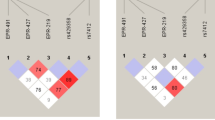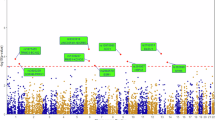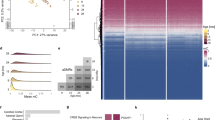Abstract
Previous studies have reported two SNPs and a haplotype marker within the Microsomal Transfer Protein gene associated with extreme longevity. Here, we test this finding in a longitudinal study of nonagenarians and in an association study. Participants in the Danish 1905 cohort study (1651 participants aged 92–93 years) were genotyped for the two SNPs (rs2866164 and Q95H) in the Microsomal Transfer Protein gene recently reported to be associated with longevity. The 1905 Cohort has been followed for 6.5 years, during which period 83% of the cohort has died. Furthermore, a group of 575 middle-aged Danish twins (mean age 53.7 years) were tested as a younger control group. The risk haplotype had no significant survival disadvantage (P-values: 0.56, 0.31 and 0.97 in the total population of nonagenarians, males and females, respectively) after 6.5 years of follow-up. The distributions of the suggested risk alleles (rs2866164-G and Q95) and the resulting haplotypes are very similar and not statistically different between the two age cohorts. The frequency for rs2866164-G is in the middle-aged compared to the nonagenarians 25.4 and 23.6% in males and 23.0 and 26.1% in females. The frequency for the risk haplotype is in the middle-aged compared to the nonagenarians 22.7 and 19.2% in males and 18.1 and 21.8% in females. In conclusion, our longitudinal study of survival in the 10th decade of life and an association study in a genetically homogeneous population provided no support for an association between the Microsomal Transfer Protein gene and extreme longevity.
Similar content being viewed by others
Log in or create a free account to read this content
Gain free access to this article, as well as selected content from this journal and more on nature.com
or
References
De Benedictis G, Tan Q, Jeune B et al: Recent advances in human gene-longevity association studies. Mech Ageing Dev 2001; 122: 909–920.
Gerdes LU, Jeune B, Ranberg KA, Nybo H, Vaupel JW : Estimation of apolipoprotein E genotype-specific relative mortality from the distribution of genotypes in centenarians and middle-aged men: apolipoprotein E gene is a ‘frailty gene’, not a ‘longevity gene’. Genet Epidemiol 2000; 19: 202–210.
Tan Q, Christiansen L, Christensen K, Kruse TA, Bathum L : Apolipoprotein E genotype frequency patterns in aged Danes as revealed by logistic regression models. Eur J Epidemiol 2004; 19: 651–656.
Ewbank DC : Mortality differences by APOE genotype estimated from demographic synthesis. Genet Epidemiol 2002; 22: 146–155.
Puca AA, Daly MJ, Brewster SJ et al: A genome-wide scan for linkage to human exceptional longevity identifies a locus on chromosome 4. Proc Natl Acad Sci USA 2001; 98: 10505–10508.
Reed T, Dick DM, Uniacke SK, Foroud T, Nichols WC : Genome-wide scan for a healthy aging phenotype provides support for a locus near D4S1564 promoting healthy aging. J Gerontol A Biol Sci Med Sci 2004; 59: 227–232.
Geesaman BJ, Benson E, Brewster SJ et al: Haplotype-based identification of a microsomal transfer protein marker associated with the human lifespan. Proc Natl Acad Sci USA 2003; 100: 14115–14120.
Swift LL, Zhu MY, Kakkad B et al: Subcellular localization of microsomal triglyceride transfer protein. J Lipid Res 2003; 44: 1841–1849.
Wierzbicki AS : New lipid-lowering agents. Expert Opin Emerg Drugs 2003; 8: 365–376.
Nybo H, Gaist D, Jeune B et al: The Danish 1905 cohort: A genetic-epidemiological nationwide survey. Age Age 2001; 13: 32–46.
Nybo H, Petersen HC, Gaist D et al: Predictors of Mortality in 2249 Nonagenarians – The Danish 1905-Cohort Survey. JAGS 2003; 51: 1365–1373.
Gaist D, Bathum L, Skytthe A et al: Strenght and anthropometric measures in identical and fraternal twins: no evidence of masculinization of females with male co-twins. Epidemiology 2000; 11: 340–343.
Fleiss J : Statistical Methods for Rates and Proportions, 2nd edn. New York: John Wiley & Sons, 1981.
Cooke D, Craven AH, Clarke G : Basic Statistical Computing, 2nd edn, London: Edward Arnold, 1990.
Tan Q, Zhao JH, Iachine I et al: Power of non-parametric linkage analysis in mapping genes contributing to human longevity in long-lived sib-pairs. Genetic Epidemiology 2004; 26: 245–253.
Cardon LR, Palmer LJ : Population stratification and spurious allelic association. Lancet 2003; 361: 598–604.
Acknowledgements
This work was supported by the US National Institute on Aging Research Grant NIA-PO1-AG08761, The Danish National Research Foundation.
Author information
Authors and Affiliations
Corresponding author
Rights and permissions
About this article
Cite this article
Bathum, L., Christiansen, L., Tan, Q. et al. No evidence for an association between extreme longevity and Microsomal Transfer Protein polymorphisms in a longitudinal study of 1651 nonagenarians. Eur J Hum Genet 13, 1154–1158 (2005). https://doi.org/10.1038/sj.ejhg.5201468
Received:
Revised:
Accepted:
Published:
Issue date:
DOI: https://doi.org/10.1038/sj.ejhg.5201468
Keywords
This article is cited by
-
Genetics of healthy aging and longevity
Human Genetics (2013)
-
Epidemiological, genetic and epigenetic aspects of the research on healthy ageing and longevity
Immunity & Ageing (2012)
-
Microsomal triglyceride transfer protein gene -493G/T polymorphism and its association with serum lipid levels in Bama Zhuang long-living families in China
Lipids in Health and Disease (2012)
-
The quest for genetic determinants of human longevity: challenges and insights
Nature Reviews Genetics (2006)
-
Genetic influence on human lifespan and longevity
Human Genetics (2006)



